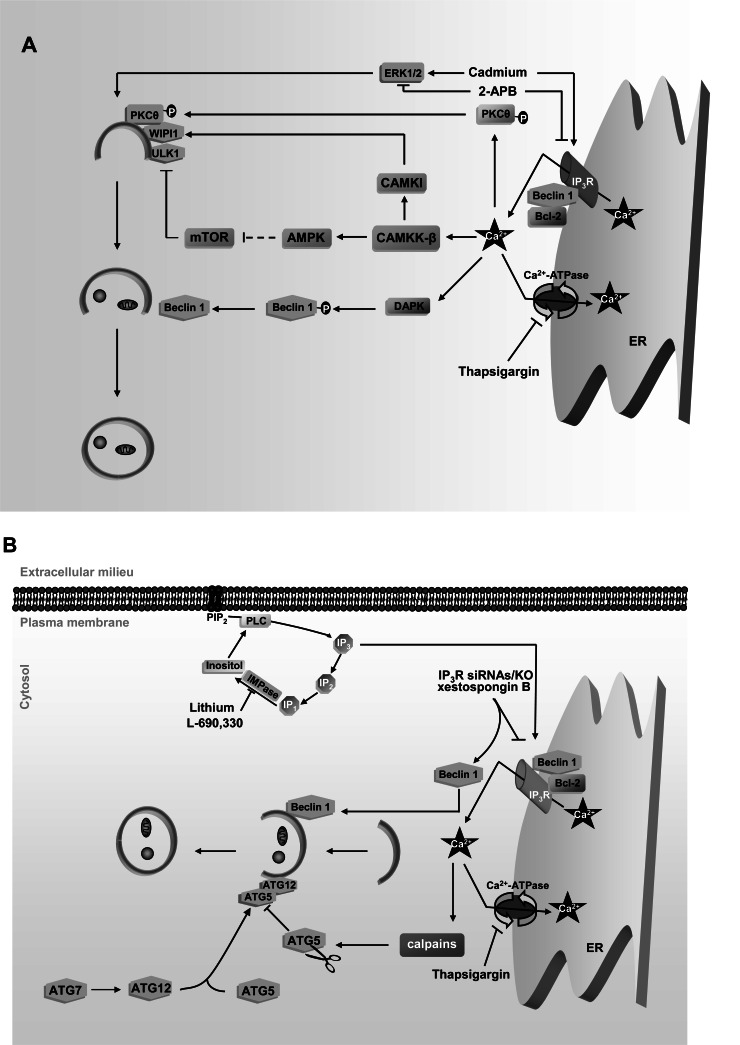Fig. (3).
ER-derived Ca2+ effects on autophagy. A. Under starvation conditions, Ca2+ derived from the ER activates autophagy: ER depletion of Ca2+ by thapsigargin induces autophagy via the same signalling pathways from fig. 2A, and by a Ca2+-dependent phosphorylation of PKCθ that directs this kinase to autophagosomes. Ca2+ release from the ER through the IP3R is inhibited with 2-APB and induced with Cadmium and this inhibits and activates, respectively, autophagy via ERK1/2 signalling. Ca2+-dependent phosphorylation of Beclin 1 by DAPK also induces autophagy. B. Under full nutrient conditions, Ca2+ derived from the ER restrains autophagy: Thapsigargin inhibits autophagy via ATG5 cleavage by calpains. As regards IP3R function, inhibitors of inositol monophosphatases (IMPase), such as Lithium and L-690,330, which prevent IP3 generation and, hence, Ca2+ release through IP3R, induce autophagy. Also the inhibition of IP3R function with xestospongin B and knockdown/knockout of IP3R dissociates Beclin 1 from Bcl-2-IP3R complex and stimulates autophagy. IP: inositol 4 monophosphate; IP2: inositol 4,5 bisphosphate. See text for further details.

